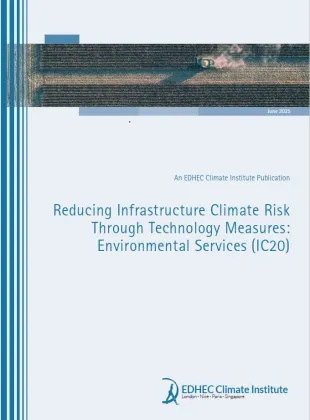
Reducing Infrastructure Climate Risk Through Technology Measures: Environmental Services (IC20)
We present an assessment of key strategies to decarbonise environmental services infrastructure assets and increase their resilience to physical climate risks, along with a review of the associated literature.
